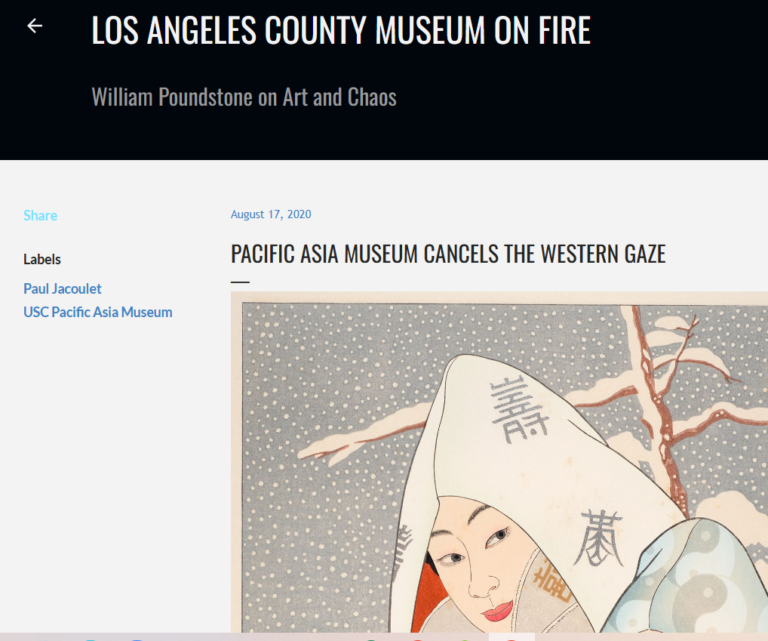Influences & critical reception
Characterising the art of Paul Jacoulet
ポール・ジャクレの木版画は、日本の浮世絵や新版画の伝統と、西洋の芸術的影響が融合した独自のスタイルを持っています。彼は葛飾北斎や歌麿に学びつつ、マティスの色彩や装飾性にも影響を受けました。また、ミクロネシアや朝鮮、満州などで出会った人々を題材に、民族的関心と理想化を織り交ぜた作品を多く残しました。ゴーギャンとの比較もしばしばなされますが、文化の盗用や男性のまなざしに関する批判も伴います。ジャクレは「もう一人の歌麿」(クリスチャン・ポラック)とも呼ばれ、日本と西洋をつなぐ越境的な芸術家でした。
Paul Jacoulet’s woodblock prints reflect a distinctive fusion of Japanese and Western artistic traditions. Raised in Japan from childhood, he was deeply influenced by the legacy of ukiyo-e masters like Utamaro and Hokusai. His prints draw on the technical excellence of traditional Japanese woodblock production, working closely with master carvers and printers in a collaborative process rooted in ukiyo-e and continued in the shin hanga revival of the early 20th century.
Yet Jacoulet’s artistic vision diverged in both form and spirit. From the West, he drew on academic draftsmanship, the decorative sensuality of Art Deco, and the expressive possibilities of modern art. His admiration for Henri Matisse is evident in his use of bold color, patterned surfaces, and flattened space. Like Matisse, Jacoulet treated the human figure and its surroundings as a canvas for rhythm, elegance, and emotional tone.
This expressive dimension is particularly striking in works that are often categorized as ethnographic. Though closely observed and meticulously detailed, these portraits transcend the observational realism typically associated with photography or academic illustration. Jacoulet was less concerned with exact replication than with evoking stillness, mood, and psychological presence. In this, he seems to share with Matisse the belief that art should offer more than factual record: “an art of balance, of purity and serenity… a soothing, calming influence on the mind.” (1) The contemplative poise and inward gaze of Jacoulet’s subjects—especially those from Micronesia, Korea, and Japan—reflect this intent. His figures do not merely represent; they resonate.
Jacoulet also shared with Paul Gauguin a romantic, if stylized, fascination with the cultures of the South Seas. His travels through Micronesia and his portraits of Indigenous people reflect both ethnographic interest and artistic idealization. The comparison with Gauguin is not unproblematic, though, and has opened Jacoulet’s work to criticism concerning the representation of the Other. These issues are taken up in more detail below.
He has been described as “The Other Utamaro” by historian Christian Polak (Soie et Lumières: L’Âge d’or des échanges franco-japonais, 2001), a nod to his mastery of the human form and intimate expression. At the same time, the idea of Jacoulet as “The Other Gauguin” captures something of his position as a Western artist working far from the West—though the label must be considered critically.
Jacoulet’s work stands at a cultural crossroads: rooted in Japanese techniques, shaped by Western aesthetics, and driven by a deeply personal, transnational sensibility. In this sense, he is no other than Paul Jacoulet.
(1) Henri Matisse, “Notes of a Painter” (1908), in Harrison, Charles and Paul Wood, eds. Art in Theory 1900–2000: An Anthology of Changing Ideas (Oxford: Blackwell, 2003), p. 99.
Influences on Jacoulet's art
Jacoulet’s work echoes earlier artists in terms of subject matter, composition and palette.
Lorem ipsum dolor sit amet, consectetur adipiscing elit. Ut elit tellus, luctus nec ullamcorper mattis, pulvinar dapibus leo.


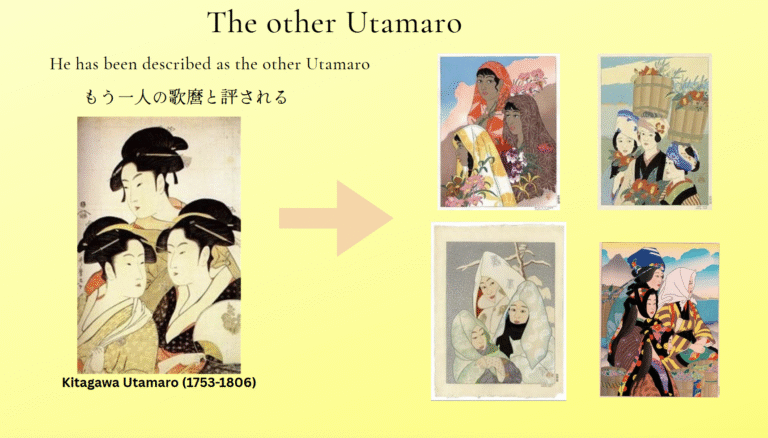




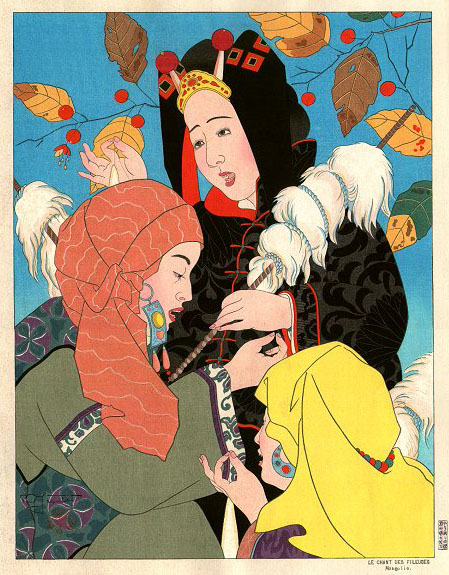
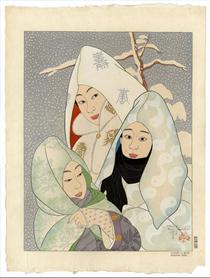
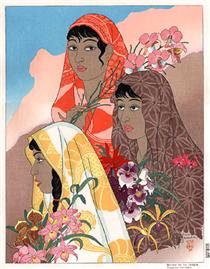
Jacoulet and the Western Gaze
Rainbow Series
Lorem ipsum dolor sit amet, consectetur adipiscing elit. Ut elit tellus, luctus nec ullamcorper mattis, pulvinar dapibus leo.
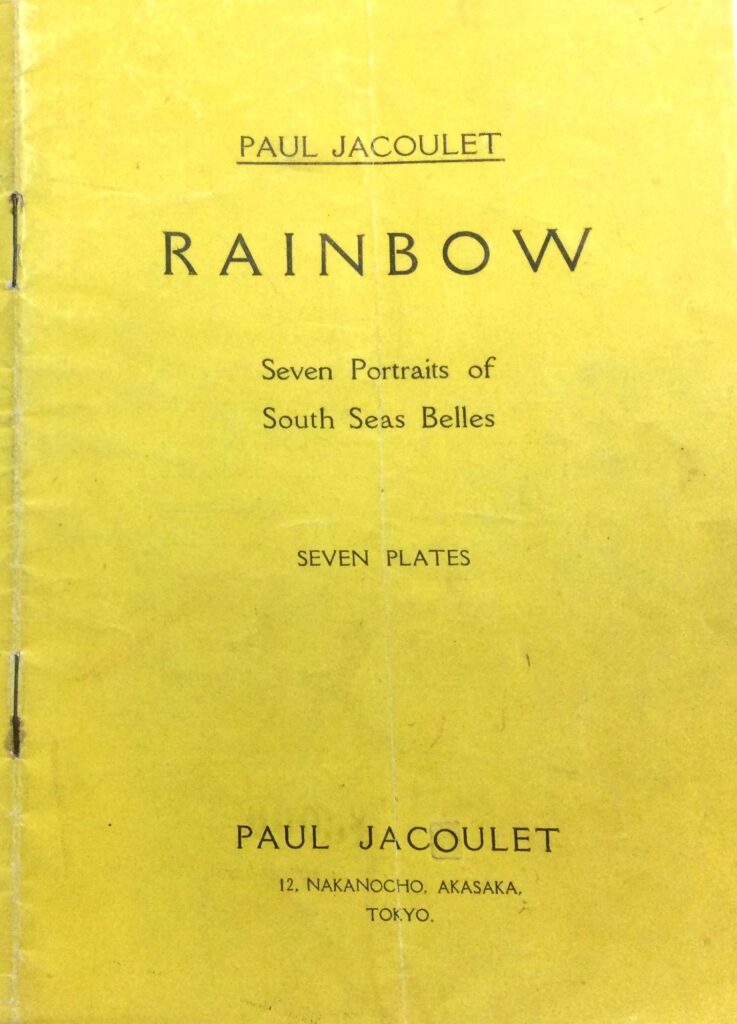
Richard Miles
Author of the widely-cited 1982 catalogs for The Prints of Paul Jacoulet exhibition and the 1989 Watercolors of Paul Jacoulet held at the Pacific Asia Art Museum in Pasadena, California.
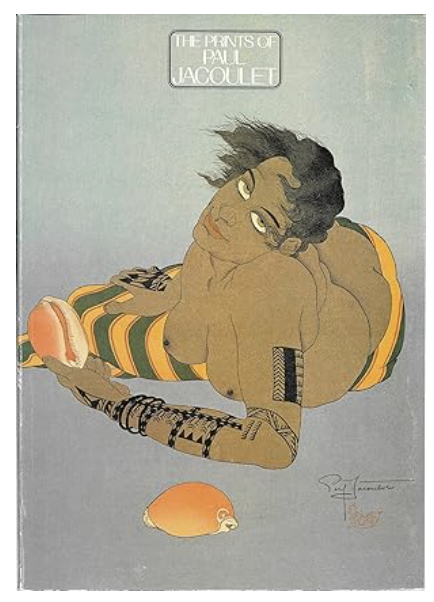
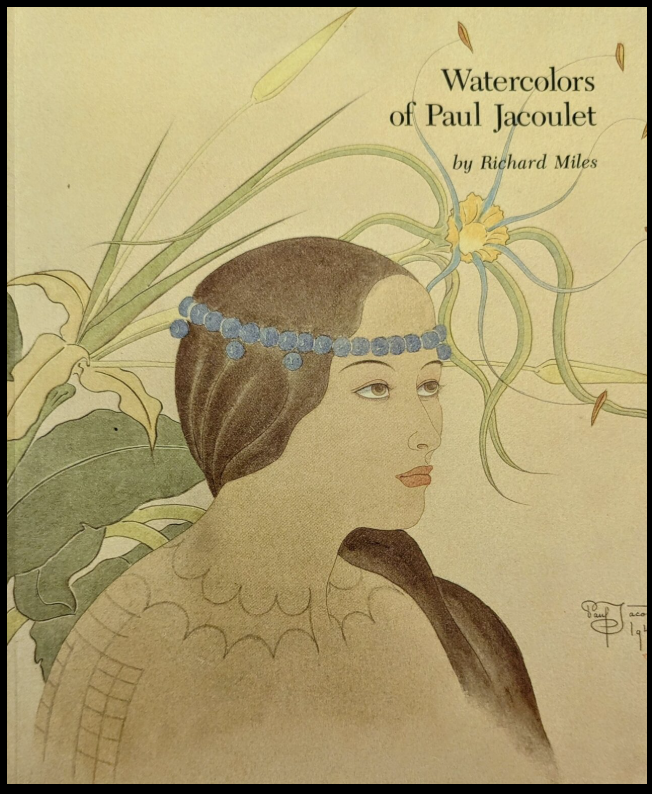
Kiyoko Sawatari
猿渡紀代子
International art curator and foremost Japanese authority on Paul Jacoulet. Has played a key role in a number of publications and exhibitions in Japan and internationally.
Lorem ipsum dolor sit amet, consectetur adipiscing elit. Ut elit tellus, luctus nec ullamcorper mattis, pulvinar dapibus leo.
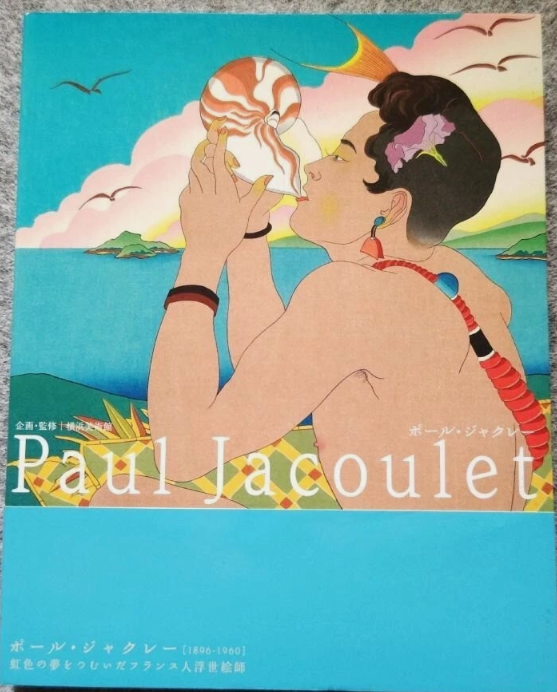



Christian Polak
Lorem ipsum dolor sit amet, consectetur adipiscing elit. Ut elit tellus, luctus nec ullamcorper mattis, pulvinar dapibus leo.
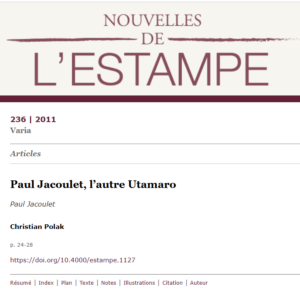
The document titled “Paul Jacoulet, l’autre Utamaro” details the life and career of French artist Paul Jacoulet (1896-1960), focusing on his unique contributions to Japanese woodblock printing. The title, “l’autre Utamaro,” highlights Jacoulet’s reputation as a modern successor to the celebrated ukiyo-e artist Kitagawa Utamaro, known for his portraits of women, reflecting Jacoulet’s admiration for and continuation of this artistic tradition.
The narrative begins with Jacoulet’s fragile health and extraordinary early education in Japan, where he mastered multiple languages, calligraphy, and both Western and traditional Japanese art forms. His early exposure to artists like Courbet and Gauguin further enriched his artistic development. Despite financial difficulties and family upheaval during World War I, he maintained a passion for art, particularly bijinga (paintings of female beauties), eventually establishing his workshop in Tokyo.
From the late 1920s, Jacoulet embarked on numerous expeditions across Micronesia, capturing the essence of indigenous cultures through vivid, ethnographically-inspired portraits. His artistry matured with the establishment of the Jacoulet Institute, where he collaborated with master engravers and printers to produce intricate and innovative prints. His works often employed luxurious materials like mica and mother-of-pearl, showcasing a blend of Japanese tradition and his original, meticulous style.
The post-war period marked Jacoulet’s resurgence, aided by connections with the American military. Despite declining health, he continued producing and exhibiting internationally, earning acclaim, though recognition in France was delayed until long after his death. The document emphasizes Jacoulet’s dedication to his craft and cultural preservation, immortalizing disappearing traditions through his art.
Hanga Geijutsu
Print Art Magazine
版画芸術
Lorem ipsum dolor sit amet, consectetur adipiscing elit. Ut elit tellus, luctus nec ullamcorper mattis, pulvinar dapibus leo.
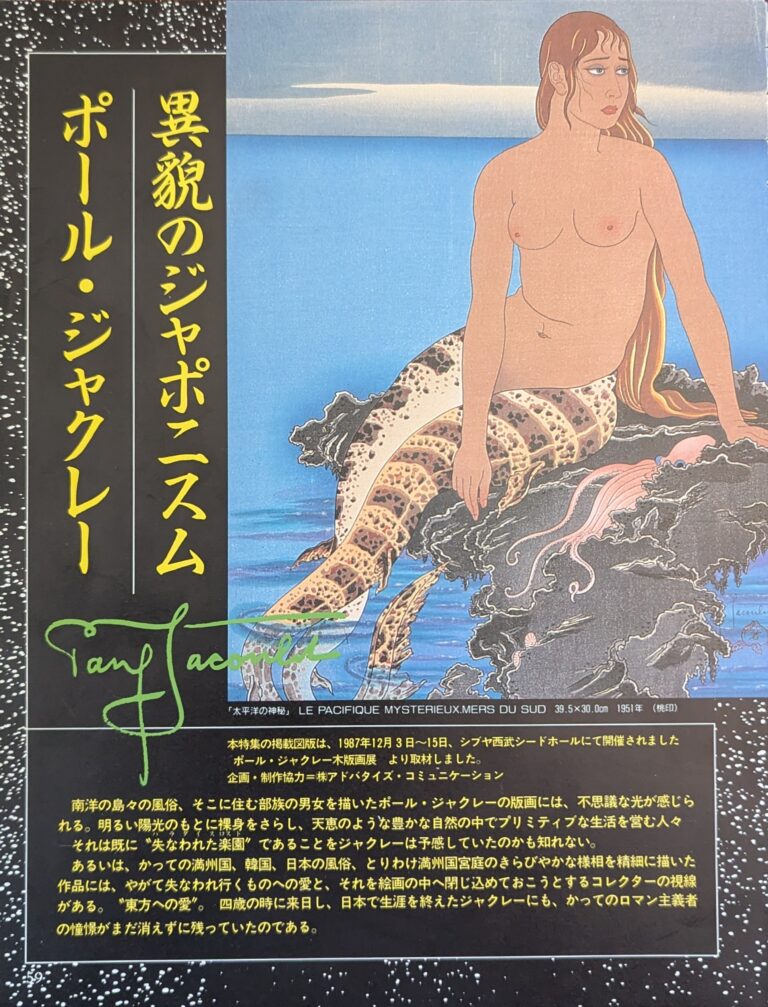
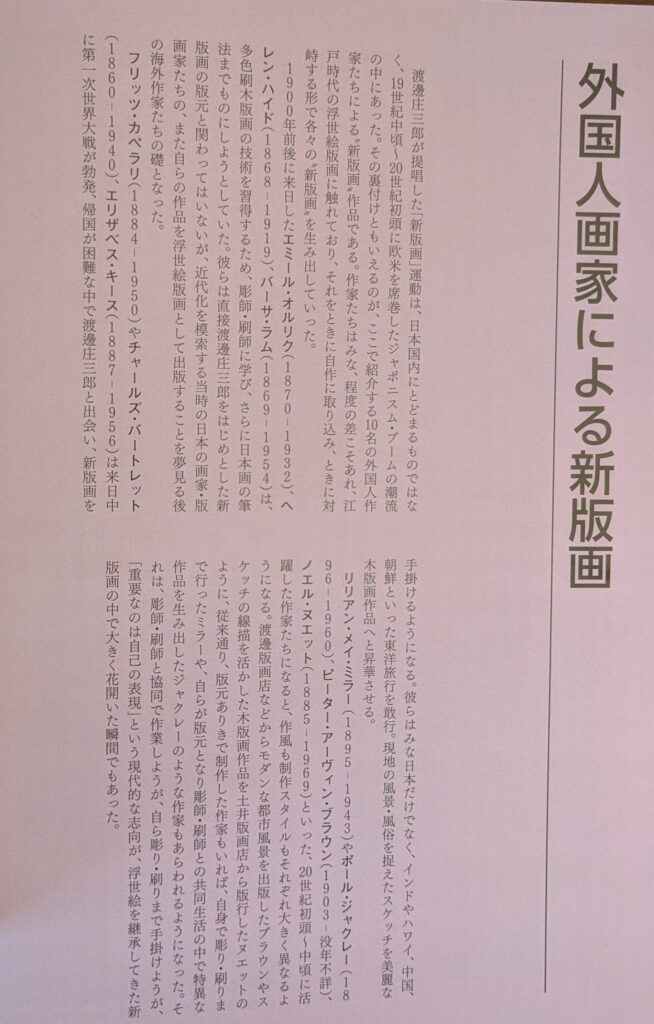
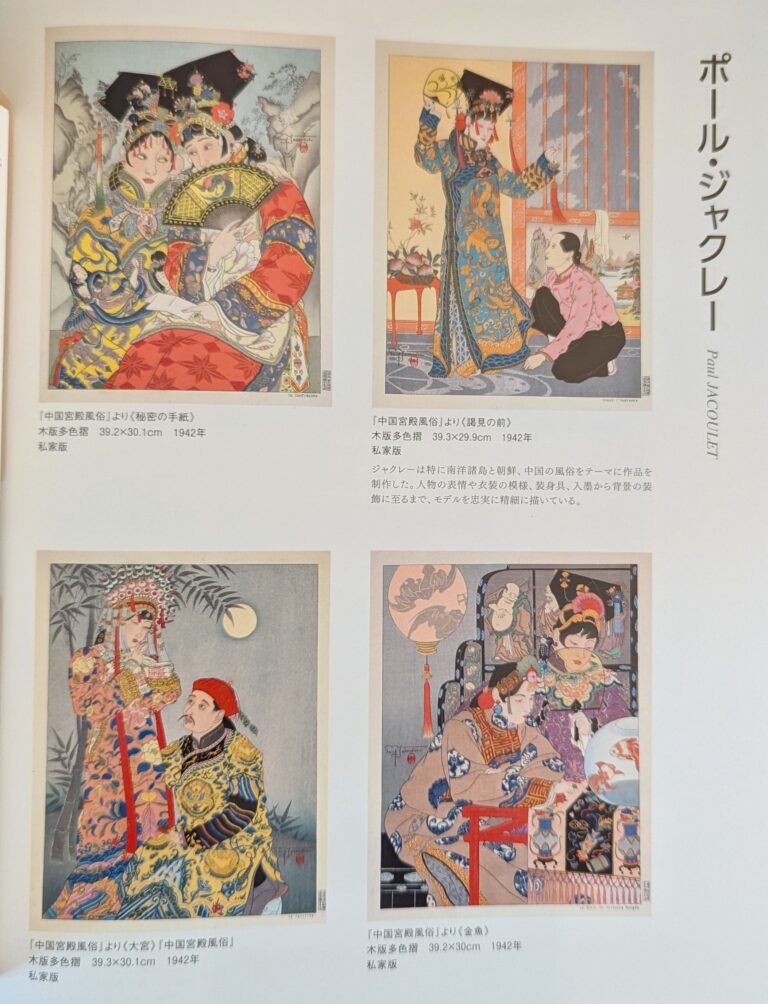
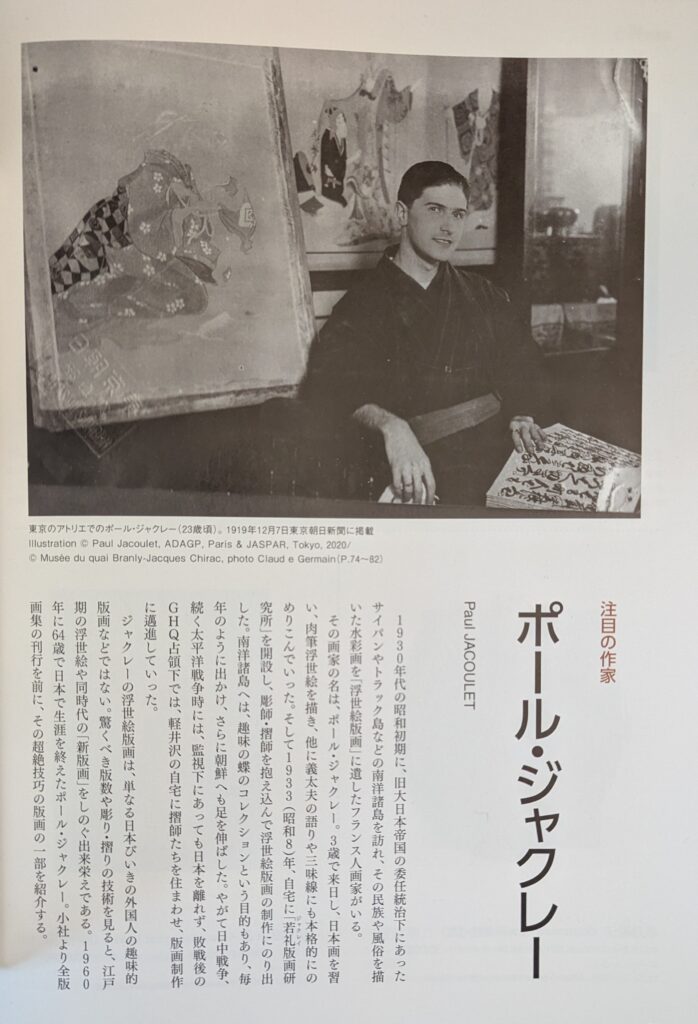
pp. 64-65.


